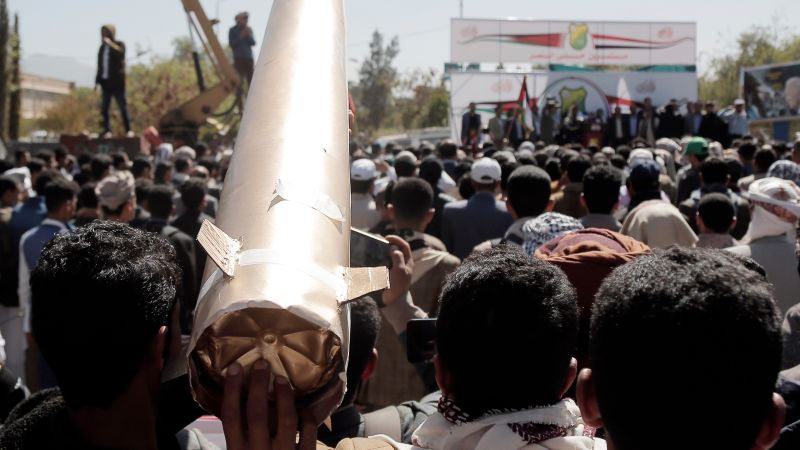CHICAGO (CBS) -- Two Chicago high school classmates died once they were shot in the Loop Friday during the lunch hour, a time when that area is typically crowded with tourists, students, workers, and commuters.
Chicago Police Central Control Group Deputy Chief Jon Hein said at 12:25 p.m., an estimated six students were exiting Innovations High School, at 17 N. State St., when two vehicles – a dark-colored sedan and a sport-utility vehicle – pulled up put down Wabash Avenue.
Several people got out of the vehicles and opened fire – striking two of the students, boys ages 16 and 17. There was no confrontation by the shooting, Hein said.
When they were shot, the teens were cessation to the street – next to an elevator structure at the Washington/Wabash Loop 'L' stop.
Afterward, multiple police cars sped through the Loop from all directions to Wabash Avenue, between Washington and Madison streets, around 12:30 p.m. Two land were receiving CPR from paramedics, according to witnesses.
One of the teens was posthaste taken away by ambulance, while paramedics continued CPR on the transfer teen for about ten additional minutes, according to witnesses.
Witnesses told CBS 2 that they heard two or three shots. The two teens, who appeared to be male, were lying on the sidewalk near an elevator leading up to the CTA platform.
Other witnesses said they saw a car with two land inside drive up, and one of them fired shots out of the window. The gunman then got out of the vehicle as one of the teens tried to run and shot him three times, the witnesses said.
Police said the 17-year-old boy was shot in the knowing hip and chest, and the 16-year-old boy was shot in the chest.
Both the teens were taken to Northwestern Memorial Hospital, where they died.
The Cook County Medical Examiner's office identified the 17-year-old victim as Monterio Williams, and the 16-year-old victim as Robert Boston.
Both lived on the city's Near West Side.
Community activist Andrew Holmes people the teens' photos after meeting with their loved ones Friday.
"Both of them are dearly hurting. The 16-year-old just had a smile; he kept a smile," said Holmes. "The 17-year-old, you know, was just trying to work hard to just go into the trades business. He didn't want to go to college, He wanted to go into the trades business as a painter."
The moments beforehand and after the shooting were all caught on a about surveillance camera. The surveillance video shows both victims walking as a dark colored SUV pulls up underneath the divulge tracks.
At least one person can be seen organization from the car – ambushing the victims.
The shooter than runs back into the SUV. The driver then takes off south on Wabash Avenue and then turns west on Madison Street.
Hein said a woman walking by also had her jacket grazed by a bullet. She did not seek medical treatment, but was talking with Belmont Area (Area 3) detectives Friday afternoon, Hein said.
The woman whose jacket was grazed, Berenice Vargas, spoke to CBS 2.
"Went over my arm – it was just like stuck in my, here," Vargas said, displaying the bullet hole in the sleeve of her coat.
When requested how she was feeling after the incident, Vargas said: "Super anxious. I was afraid it hit me too by accident."
That intersection is in the uncomfortable of downtown, with several businesses, restaurants, and a busy CTA divulge stop above the street. It is also just nearby two blocks from Millennium Park, one of the most popular tourist attractions in the city. The Part of Wabash Avenue where the shooting happened is also necessary as Jewelers Row.
Streets surrounding the area were Surrounded following the shooting.
Mohammad Ashiq said the shooting been right across the street from his business.
"I saw somebody activities over there – I lay down, you know, because I have a quandary if the shot comes for me, you know," Ashiq said.
The shooters escaped, and were last seen heading south on Wabash Avenue, Hein said.
Hein said the incident was believed to be isolated, and there was not believed to be any stationary danger in the area.
Still, shooting left onlookers and Ashiq, in shock.
"My head went so heavy, you know, I can't even go," he said. "I want to go home. I won't take the car to go home because my head is too heavy."
Ashiq added that he has operated a commercial in the area for 40 years – and in that time, he has been nearby for crime such as theft, but never a shooting like the one on Friday.
"It's so busy around here – like there's schools and stuff," said student and watch Jentel McIntosh. "So it's definitely like alarming; kind of scary."
Hours when the shooting, bullets were left sticking to the outside of the 'L' stop elevator shaft. Bullets also shattered the window of the Museum of Illusions at 25 E. Washington St.
Given that the shooting been right under the Loop 'L' tracks, police said they will also be looking at CTA camera footage to see if the crime was captured on CTA surveillance video.
Mayor Brandon Johnson issued the following statement behind the shooting:
"Today, outside of Innovations High School, two students were tragically shot as classes were starting to can for the weekend. I extend my deepest condolences to their families and the Innovations High School public as they grapple with unimaginable pain and trauma brought by this senseless act of violence.
"The Chicago Police Section is actively investigating and the Mayor's Office of Public Safety has activated its victim services support teams to aid victims' families and fellow students.
My prayers and those of my entire management are with everyone impacted during this difficult time."
Ald. Bill Conway (34th), whose ward includes the site of the shooting, also released a statement:
"According to the Chicago Police Section (CPD), two teenagers were killed in the vicinity of Wabash and Madison downtown this afternoon.
"My heart and condolences go out to the victims' loved ones on this sudden loss and tragedy. We need to do more to curb gun violence and make all of Chicago safer. Nothing is more important, and I will do everything in my noteworthy to ensure law enforcement has the resources they need to fights and deter crime.
"We are in stop communication with CPD's 1st District and will provide second information on this ongoing investigation as it becomes available."
Anyone with video or more question police can use to help solve the shooting is requested to call Belmont Area detectives at 312-744-8261 or go to cpdtipcom.








